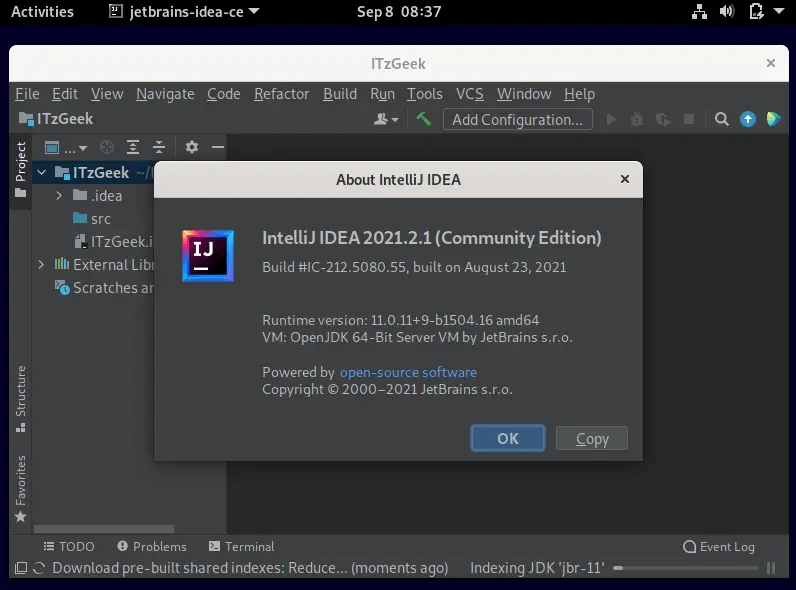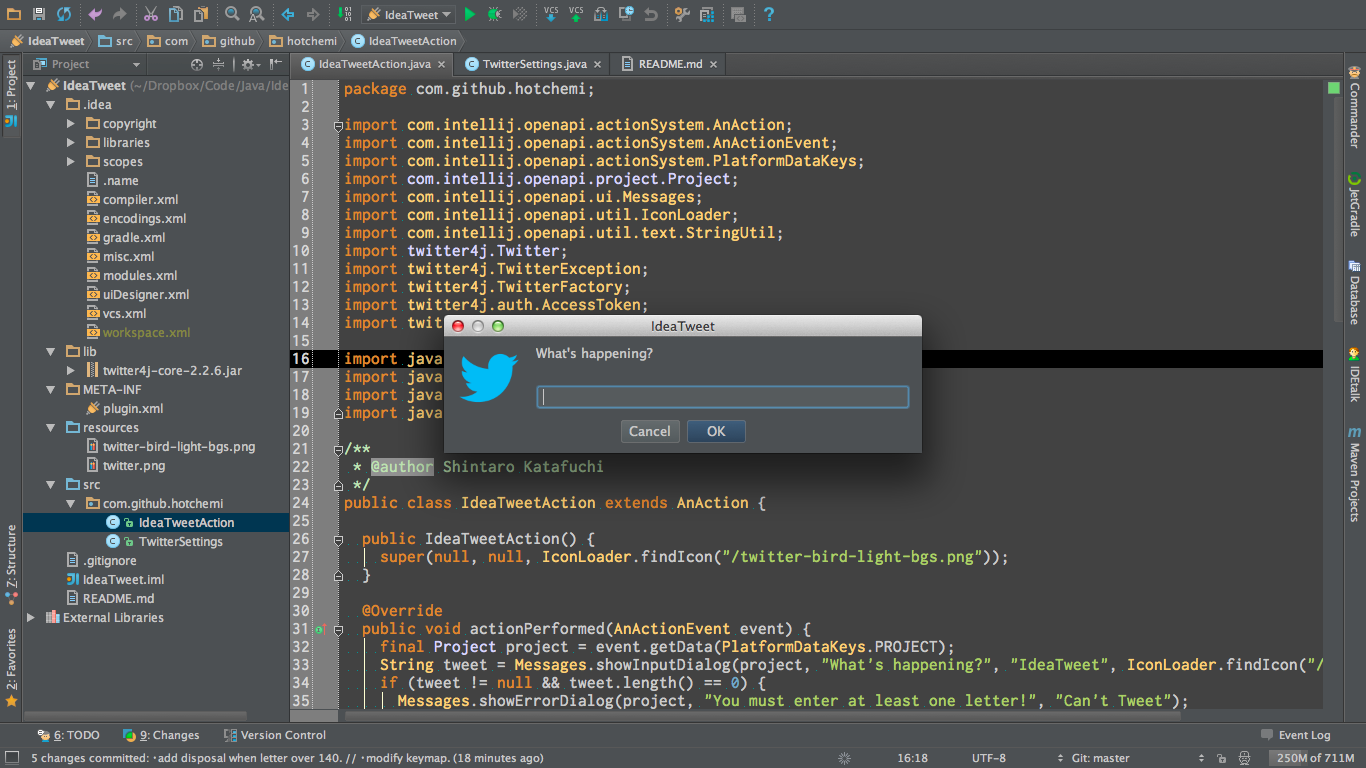

The properties listed define the plugin itself or configure the gradle-intellij-plugin – check its documentation for more details. Version of Gradle used for plugin development. Java language level used to compile sources and generate the files for - Java 11 is required since 2020.3. IDE sources downloaded while initializing the Gradle build.Ĭomma-separated list of dependencies to the bundled IDE plugins and plugins from the Plugin Repositories. The version of the IntelliJ Platform IDE will be used to build the plugin. The current version of the plugin in SemVer format. Plugin name displayed in the JetBrains Marketplace and the Plugins Repository. Package name - after using the template, this will be set to. The project-specific configuration file gradle.properties contains: Property name

Configuration written with Gradle Kotlin DSL.The most significant parts of the current configuration are:
#Jetbrains intellij how to#
NOTE: Make sure to always upgrade to the latest version of gradle-intellij-plugin.Ī project built using the IntelliJ Platform Plugin Template includes a Gradle configuration already set up.įeel free to read through the Using Gradle articles to understand your build better and learn how to customize it. The gradle-intellij-plugin makes it possible to run the IDE with your plugin and publish your plugin to JetBrains Marketplace Repository. The recommended method for plugin development involves using the Gradle setup with the gradle-intellij-plugin installed. TIP: To use Java in your plugin, create the /src/main/java directory. Then you can get to work implementing your ideas. Once this is complete, the project is ready to be cloned to your local environment and opened with IntelliJ IDEA.įor the last step, you have to manually review the configuration variables described in the gradle.properties file and optionally move sources from the package to the one that works best for you.

This allows you to create a new repository easily without copying and pasting previous content, clone repositories, or clearing the history manually.Īll you have to do is click the Use this template button (you must be logged in with your GitHub account).Īfter using the template to create your blank project, the Template Cleanup workflow will be triggered to override or remove any template-specific configurations, such as the plugin name, current changelog, etc. Publishing the plugin with the Gradle IntelliJ Pluginīefore we dive into plugin development and everything related to it, it's worth mentioning the benefits of using GitHub Templates.īy creating a new project using the current template, you start with no history or reference to this repository.Plugin signing with your private certificate.Changelog maintenance with the Gradle Changelog Plugin.Dependencies management with Dependabot.Continuous integration based on GitHub Actions.actions – basic action with shortcut binding.services – project-related and application-related services.listeners – project and dynamic plugin lifecycle.In this README, we will highlight the following elements of template-project creation: TIP: Click the Watch button on the top to be notified about releases containing new features and fixes. If you're still not quite sure what this is all about, read our introduction: What is the IntelliJ Platform? The main goal of this template is to speed up the setup phase of plugin development for both new and experienced developers by preconfiguring the project scaffold and CI, linking to the proper documentation pages, and keeping everything organized. IntelliJ Platform Plugin Template is a repository that provides a pure template to make it easier to create a new plugin project (check the Creating a repository from a template article). TL DR: Click the Use this template button and clone it in IntelliJ IDEA.


 0 kommentar(er)
0 kommentar(er)
